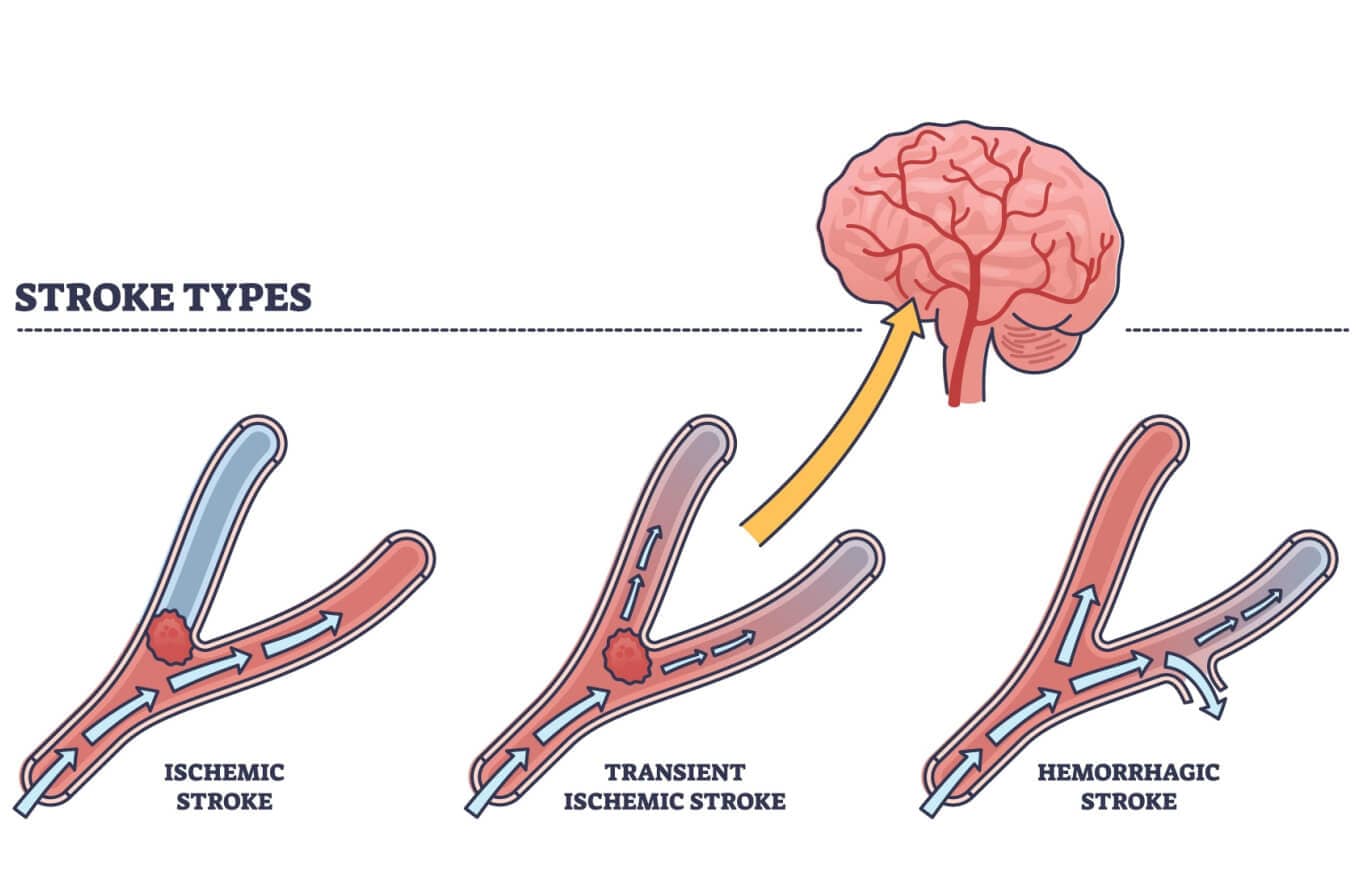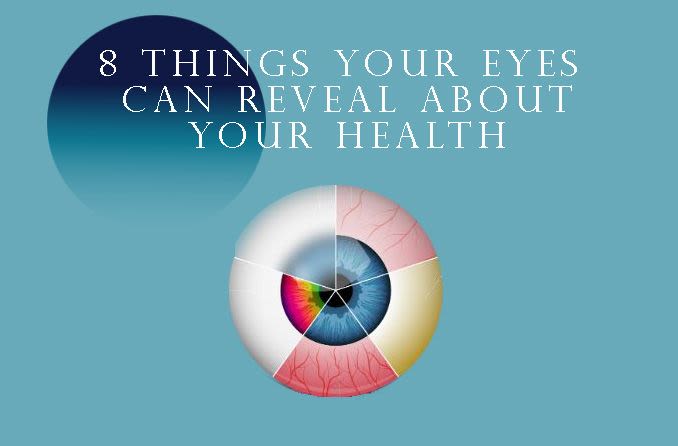Due to age and other risk factors such as high blood pressure and high cholesterol, arteries may narrow, harden and become clogged with deposits called “plaque.” This is known as atherosclerosis. It can affect blood vessels in the heart, brain and entire body, including small arteries supplying blood to the retina and optic nerve.
Small pieces of cholesterol plaque can sometimes break away from the carotid artery, a major blood vessel that branches off the aorta (from the heart) and supplies blood to the brain and eyes. These plaque deposits can travel to the arteries of the eye, making them visible during a dilated eye exam.
If these pieces of plaque reach the brain, they can cause a stroke. If your eye doctor spots plaque deposits, you will be sent to your primary care doctor, or to get an imaging study done.
Eye conditions that reveal artery blockage, narrowing and hardening include:
Amaurosis fugax
Amaurosis fugax can result from blockage of the internal carotid artery. It is a temporary loss of vision in one eye that can last up to 30 minutes. This is a warning sign that a stroke may happen.
Retinal artery occlusions
The most common cause of a retinal artery occlusion is an embolism, which is a blockage of an artery by a circulating blood clot. An embolism can travel from the heart or blood vessel and lodge in the eye. This can be visible during an eye exam.
The three most common types of blockages are due to cholesterol and calcium (from the carotid arteries that send blood from the heart to the brain) and blood clots from the valves of the heart. Your eye doctor can see the blockages as a white or orange blockage in your eye’s blood vessels.
A retinal artery occlusion is sometimes referred to as an “eye stroke” and can result in sudden, painless vision loss and difficulty seeing.
A 2015 study found that previously undiagnosed vascular (relating to blood vessels) risk factors were found in 78% of all central retinal artery occlusion patients. A 2017 study found that after a retinal artery occlusion, there was a high risk of a vascular event (such as a stroke) occurring within one month.
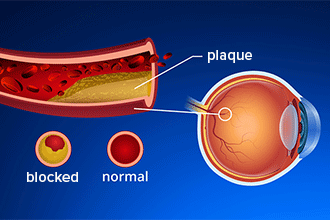
Central retinal artery occlusion (CRAO)
Retinal vein occlusions
Another type of “eye stroke,” a retinal vein occlusion (RVO) can indicate high cholesterol and high blood pressure. Retinal vein occlusions are the result of blood clots, narrow blood vessels or stiffened arteries that compress veins at junctions where they cross each other.
Sudden or gradual vision loss and blurry vision in part or all of one eye can result. An eye doctor may see signs of “arteriovenous nicking” — or constriction of the vein — where an artery crosses above it.
A 2016 South Korean National Health Insurance Service study analyzing over one million people found that the development of retinal vein occlusion was associated with a higher risk of a heart attack.
A 2019 meta-analysis delivered additional bad news. The analysis of 15 studies and nearly half a million people found that patients with RVO have an increased risk of cardiovascular events and death.
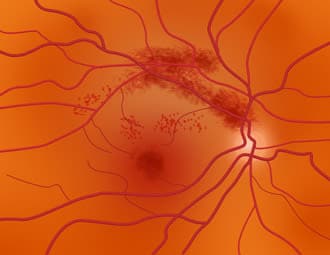
A branch retinal vein occlusion (BRVO) can develop from a blood clot.
Xanthelasma
A possible sign of high cholesterol is the presence of yellow bumps or raised areas around the eyes and near the nose. These deposits, called xanthelasma, are the result of cholesterol that has built up under the skin.
While they do not affect your vision, they may indicate heart disease. Nearly half of individuals who have xanthelasma have high cholesterol.
Arcus senilis / Corneal arcus
This condition is caused by fatty substances and cholesterol that create a light gray or blue ring around the edge of the cornea.
It is common in middle or older age, and is referred to as “arcus senilis” in this age group. But, it can be an indicator of high cholesterol in children or young adults (when it may be called juvenile corneal arcus).
Men younger than 40 with corneal arcus have an increased risk of death from coronary artery or cardiovascular disease compared with men who do not have it.
If an eye doctor finds the presence of corneal arcus in a patient younger than 40, a cholesterol screening with a primary care doctor will be recommended.
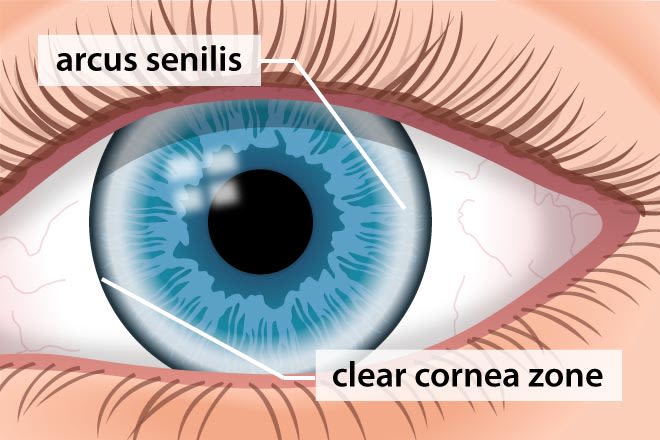
Appearance of arcus senilis (corneal arcus).





